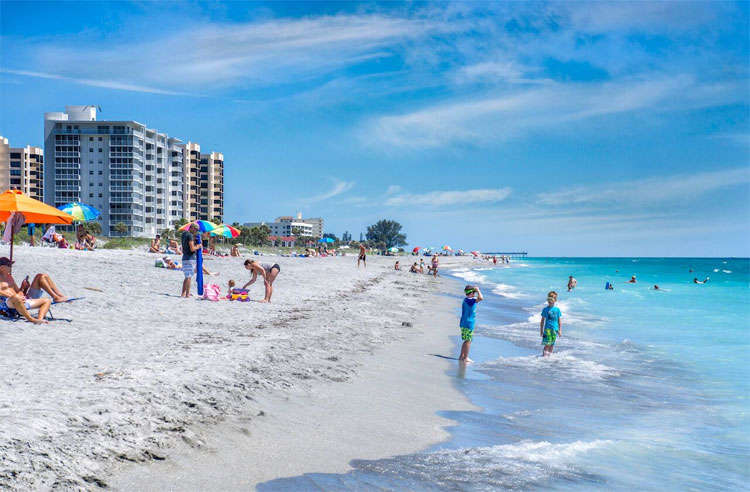The 7,000-year-old graveyard was buried at the bottom of the sea
Discovering thousands of years of cemetery of ancient Americans in Florida sea can reveal many new things about human history.
This graveyard is located only 275m away from Manasota Key coast of Florida (USA) and is protected in a 'peat-bottomed freshwater lake with thousands of years of life' , the state government's statement said.
This graveyard is located in the city of Venice, in Sarasota County, a hunting ground for the famed Florida fossil. Divers and tourists in many places often flock to Venice not only to swim, but also to hunt for palm-sized teeth, extinct sharks 2.5 million years ago.

Sea in Venice, FLorida, USA.(Photo: mustdovisitorguides).
Reports of this mysterious cemetery began in 2016 when divers noticed there were artificial objects on the seabed, at a depth of only 6.5m. A diver also picks up an object like a human molar.
The diver then reported to Ryan Duggins, the underwater archaeological supervisor of the Florida State Archaeological Research Bureau, and sent a photograph of the object to him. After confirming that this is a molar tooth, this discovery caused excitement in archaeologists. The smooth surface of the tooth indicates that it may belong to a person who regularly eats hard foods.
'This is something we don't see in modern society, so the tooth is an important proof of a prehistoric person,' Duggins replied to National Geographic.
Duggins and other archaeologists dived into the area and discovered another set of evidence: broken arm bones, human skulls, wooden poles and cloths. Wood poles and skulls help Duggins make the assumption that this is an intact preserved swamp cemetery of Native Americans.
Video: News Channel 8.
In 2017, Duggins and the team returned here to excavate a small area to discover things hidden beneath the seabed mud. Researchers have unearthed six remains, but that is only a small part when the site is predicted to span more than 4,000 square meters.
Measuring radioactive carbon shows that these remains are about 7,000 years old. At that time, this ancient group of people began moving from nomadic life to settling in a fixed village system, leading to the construction of this ancient cemetery. Over the centuries, rising water levels have submerged the entire area to the bottom of the sea.
'From what we discovered, when a resident died, they would wrap the corpse into hand-woven fibers and sink it to the bottom of the lake,' explains Duggins. 'A series of treated and sharpened wooden poles are plugged into the bottom of the lake around the corpse, in which the head piles to rise out of the water ".
To excavate the entire area of the cemetery under the sea will need a lot of effort to study in the future. Duggins also stressed the importance of this discovery: ' Finding a 7,000-year-old site perfectly preserved in the Gulf of Mexico is amazing. But we will be very careful in studying this area. Remember that this is a burial place and we must approach it with all respect. "
- Egypt discovered an ancient graveyard of more than 2,000 years old
- Graveyard mammoth under the Volga river
- Decode the mysterious cemetery about 3400 years
- 41 minutes on the bottom of the lake and the marvelous end of the 13-year-old boy shocked the doctor
- Discover dozens of 2,000-year-old mummies in Egypt
- Horror graveyard mummy grinning
- Discovered a 4,300-year double grave
- The world's largest graveyard exists for more than 1,400 years
- A 3,000-year-old secret buried in an ancient bronze sword
- Huge graveyard in Australia
- The torrential rain revealed a 2,000-year-old giant structure in Palestine
- Accidentally discovered the graveyard of hundred-year-old boats and ships on the seabed
 Discovered an ancient centipede fossil 99 million years old
Discovered an ancient centipede fossil 99 million years old Discovered bat-like dinosaurs in China
Discovered bat-like dinosaurs in China Discovered a 200-year-old bronze cannon of the coast
Discovered a 200-year-old bronze cannon of the coast Discover 305 million-year-old spider fossils
Discover 305 million-year-old spider fossils